Click here for the PEAK FALL FOLIAGE MAP
FALL FOLIAGE in Central Park NYC
NORTH WOODS
It’s hard to miss the reds, oranges, and yellows in the North Woods this time of year. As one of the Park’s three woodlands, it offers people and wildlife an oasis of nature in the middle of New York City. Since the Conservancy completed a restoration of the Ravine, a smaller landscape within the North Woods, you can take in amazing views of the restored Loch (Scottish for “lake”) against a backdrop of fall colors.
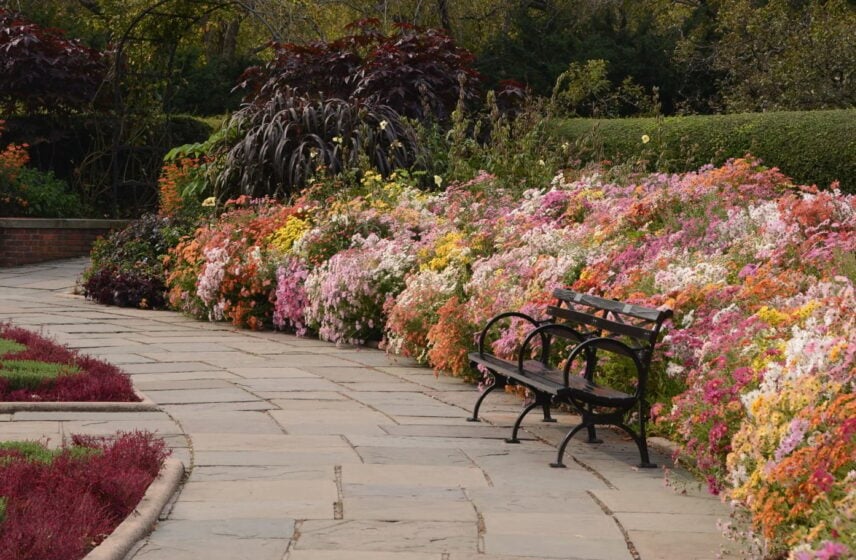
CONSERVATORY GARDEN
You may associate Conservatory Garden’s crabapple allées with springtime, but these trees also turn reddish-orange in the fall. Combined with the Garden’s glorious chrysanthemum display that is in full bloom around the time of peak fall foliage, this part of the Park makes for a must-see destination this season.
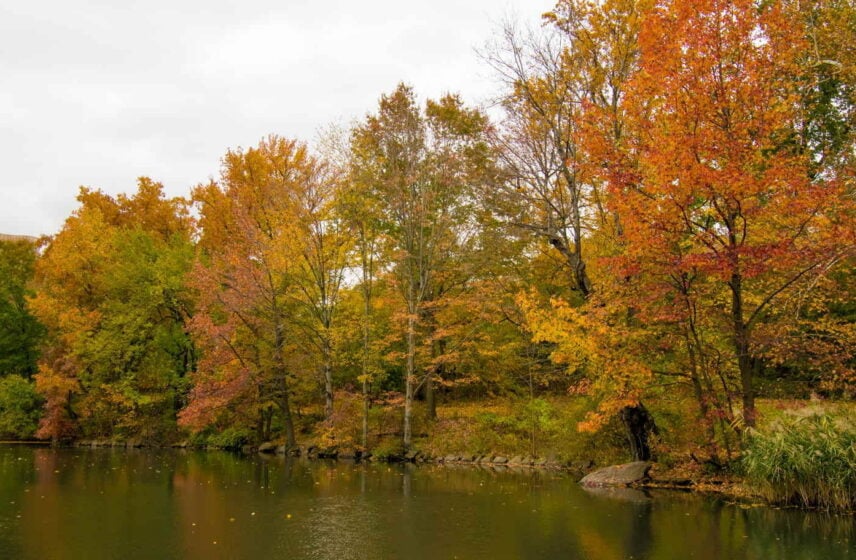
THE POOL
The Pool serves as a stunning location to admire the foliage turn of trees like red oak, hickory, tupelo, bald cypress, and sugar maple. It also doubles as a great spot to see turtles, birds, fish, and other wildlife. Be sure to admire the rustic bridge just east of the Pool—continuing east from here, you’ll enter the North Woods.
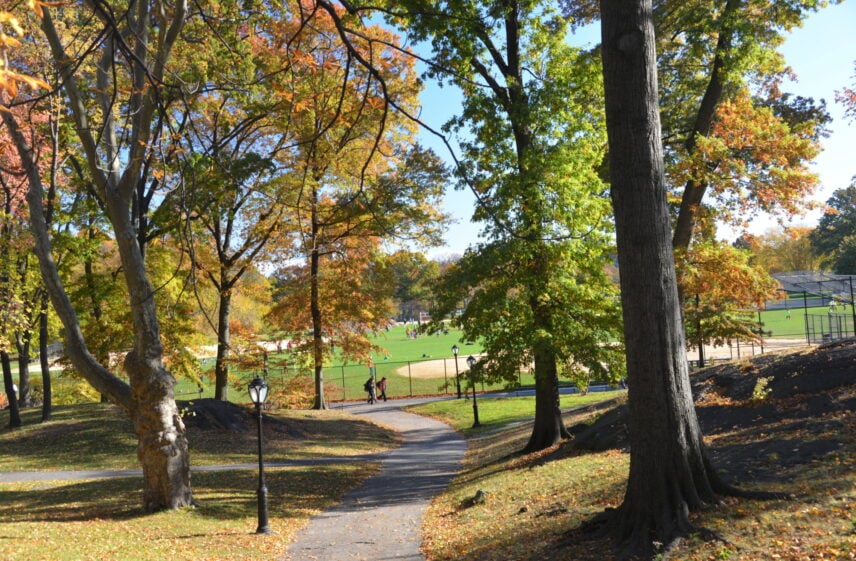
NORTH MEADOW
From certain vantage points, the North Meadow feels limitless. Take in the combination of colorful leaves from the hickory, sugar maple, and flowering dogwood, while admiring this area’s rocky outcrops and hilltops.
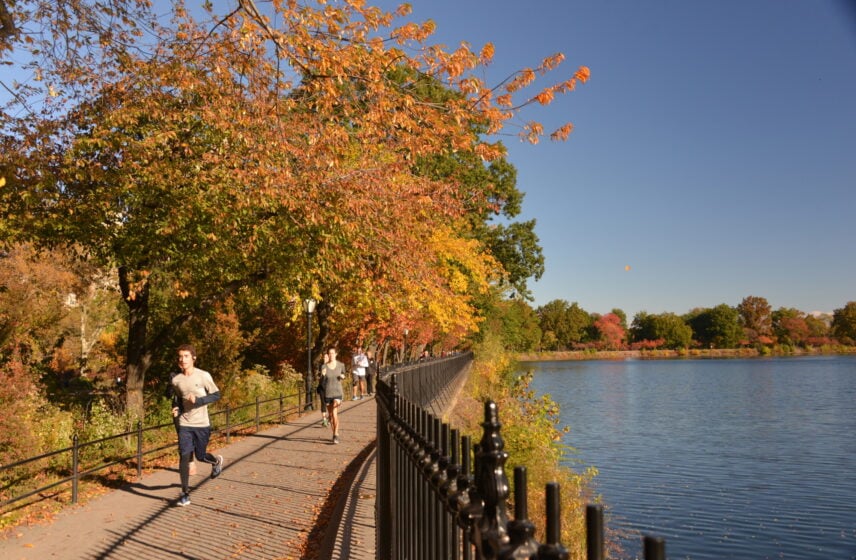
RESERVOIR
On the Reservoir’s west side, you’ll find the Kwanzan cherry, which turns bronze and red in the fall. On the east side, you’ll see the yoshino cherry, which becomes yellow and features sharply contrasting bark.
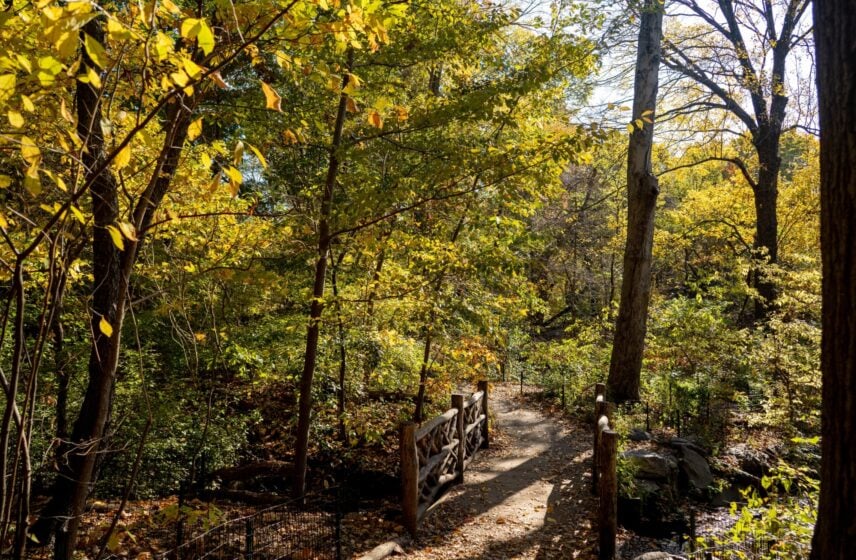
THE RAMBLE
Make your way to the Ramble for a dense explosion of color. The Park’s most popular woodland features colors of the red oak, sweet gum, pin oak, sassafras, and more. Don’t forget to visit the beautiful three-stemmed black tupelo in Tupelo Meadow, which is north of Azalea Pond.

THE MALL & LITERARY WALK
As the only formal promenade in the Park, the Mall was designed as a spot to see and be seen, and when the towering American elms turn bright yellow in the autumn, it’s truly a sight to behold. Snap a picture of this stunning golden archway, and take a moment to thank a Conservancy arborist: American elms are delicate trees, and our staff works hard year-round to keep them healthy and safe.
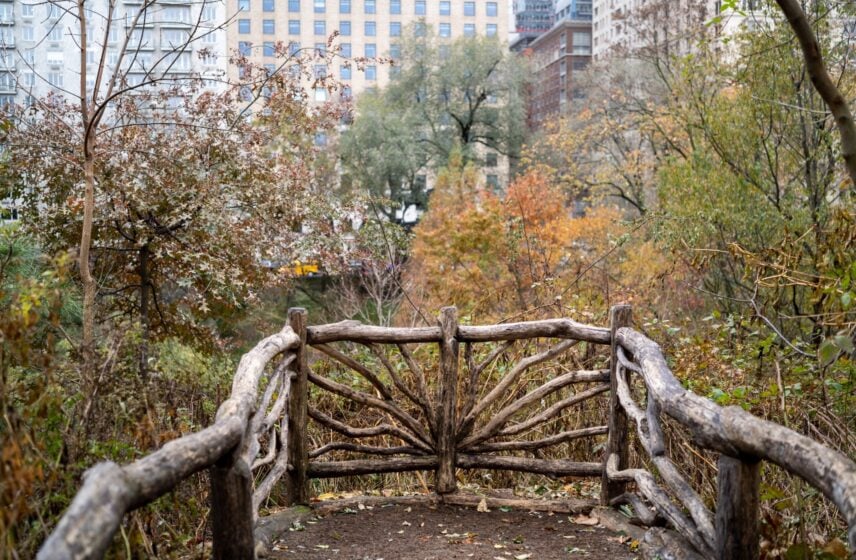
HALLETT NATURE SANCTUARY
Look for the colors of the black cherry, sawtooth oak, gray birch, and tupelo at the Pond and in the Hallett Nature Sanctuary. The Hallett—the smallest of the Park’s woodlands—is open to the public daily. Enjoy its rustic features, such as a scenic overlook, railings, and benches that provide meditation spots and breathtaking views of the Pond and south end of the Park.
FEATURED TREES
-
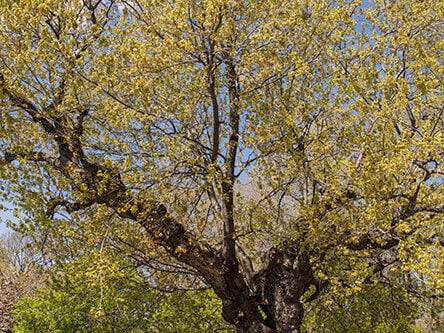
PLANT
Red Maple
It’s not just the red maple’s leaves that are red! In spring, its small flowers are red; these then make way for red-tinged winged seeds called “samaras.” In summer, the red maple boasts red stems. In fall, red maples blaze forth in a fiery spectacle all over Central Park. -
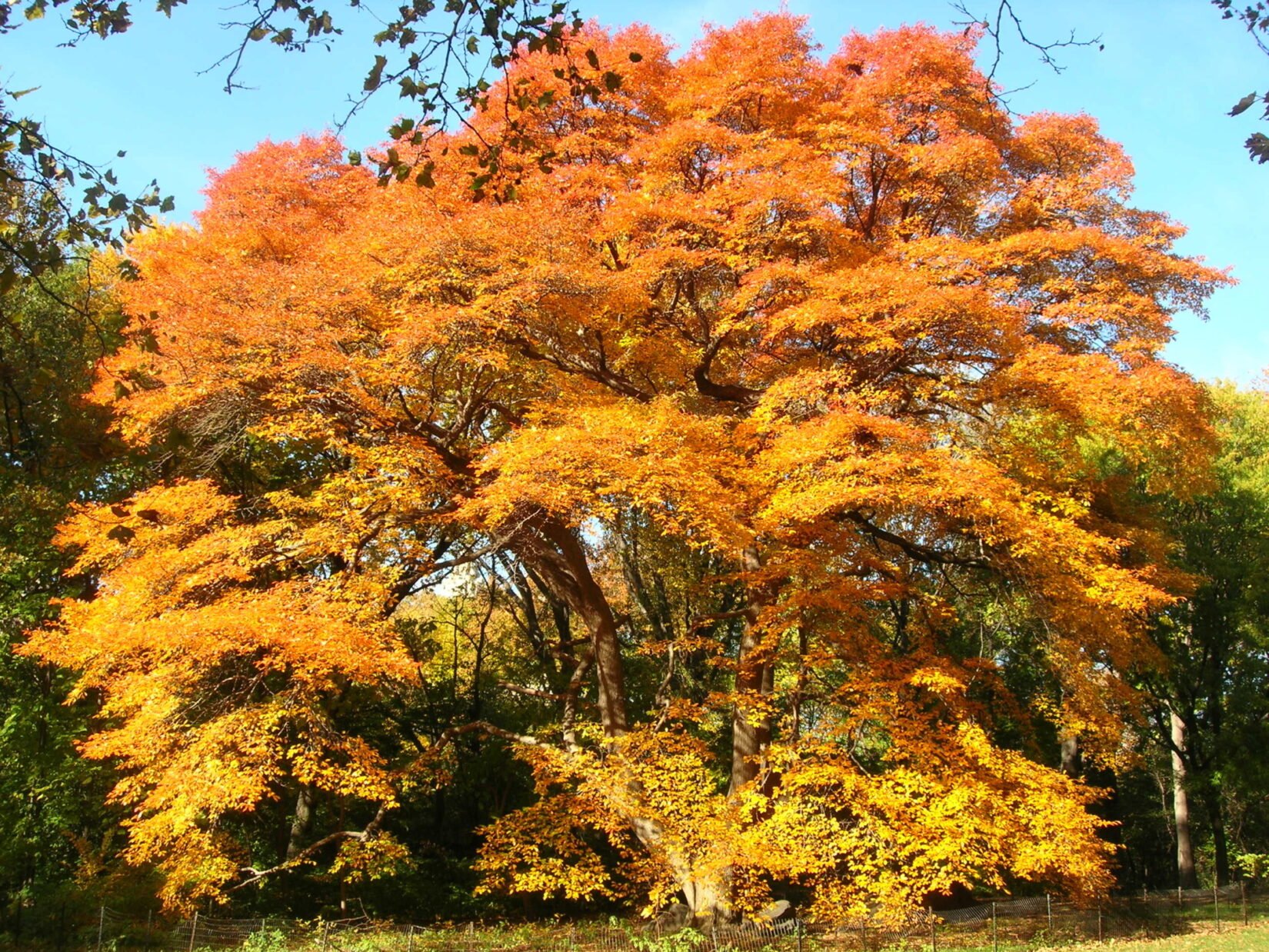
PLANT
Tupelo
With its orange, yellow, and fire-engine red leaves, the black tupelo is one of the most gorgeous trees in the Park in autumn. And it’s not just human leaf-peepers who adore it: Migratory birds love its berries, which ripen at the same time its leaves change color. One of Central Park’s most iconic spots for fall foliage is the Ramble’s Tupelo Meadow, where you’ll find a magnificent three-trunked black tupelo offering a colorful fall foliage display. -
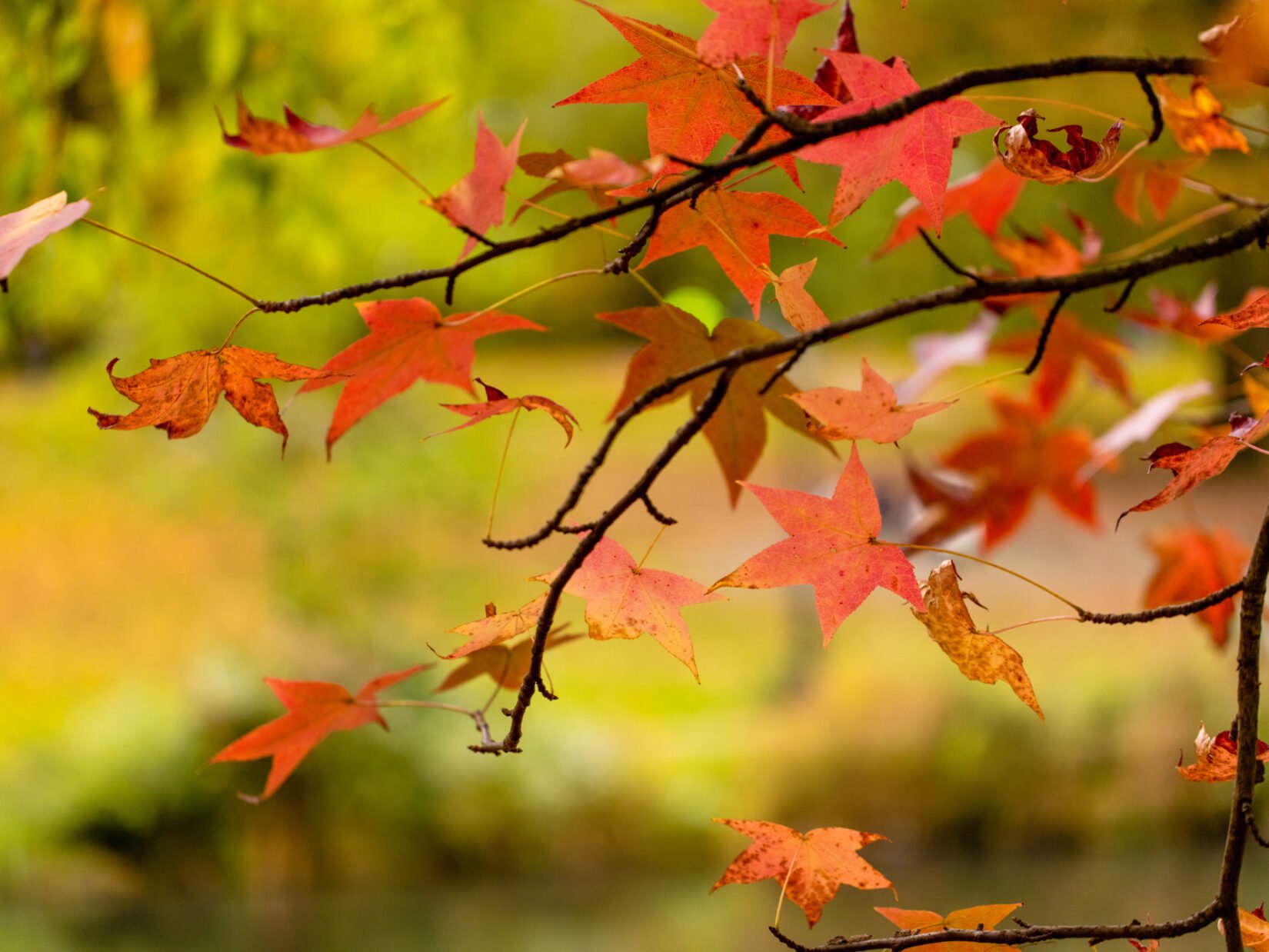
PLANT
Sweetgum
There are more than 100 sweetgum trees in Central Park, and it was likely growing wild in the area before the Park’s construction. Arguably offering the widest color range of all the Park’s tree species, it can turn purple, orange, red, or even pink in the fall. Sweetgums have star-shaped leaves, making them pretty no matter the season. -
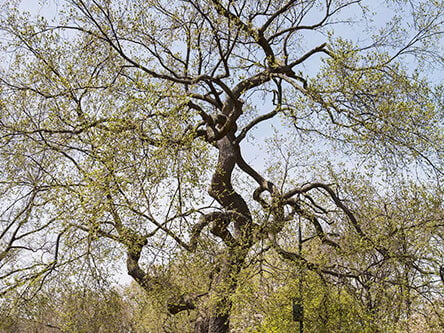
PLANT
American Elm
Stop by the Mall to see an arching canopy of American elms, a towering tree whose oval-shaped leaves that turn bright yellow in autumn. American elms also tend to have twisting, upper branches, which distinguish this species from its European cousins. -
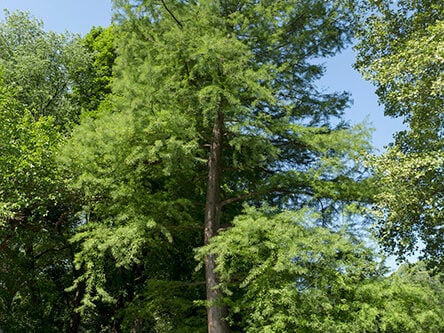
PLANT
Bald Cypress
The bald cypress may look like an evergreen, but it’s actually a deciduous conifer, forming cones in the summer and dropping needles in fall. So if you see something that looks like an evergreen dipped in bronze, that’s the bald cypress. And here’s another fun fact: At around 50 to 70 feet in height, the bald cypress may seem tall, but when compared to its relatives the giant sequoia and California redwood, it turns out to be the small one in its family! -

PLANT
Black Cherry
The black cherry is the most common tree in Central Park. It has long, shiny leaves that turn yellow and red in autumn. Although the black cherry is only distantly related to the trees that provide the cherries we humans eat, birds and mammals both love its fruit, and its leaves provide food for the Eastern tiger swallowtail butterfly. -
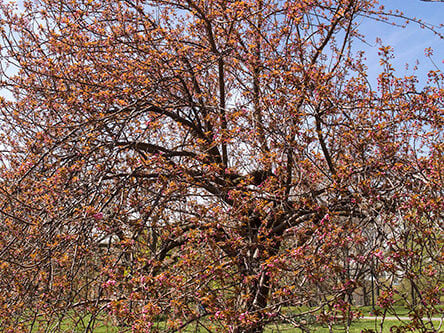
PLANT
Kwanzan and Yoshino Cherry
When we think of cherry trees, we tend to think of the glorious white and pink blossoms they wear in the spring. But come autumn, the Park’s cherries are once again alive with color. The cherries that surround the Reservoir were donated by the Japanese government in 1912, and there are two different species to admire: On the west side of the Reservoir you’ll find the Kwanzan cherry, while on the east side you’ll find the Yoshino cherry. -
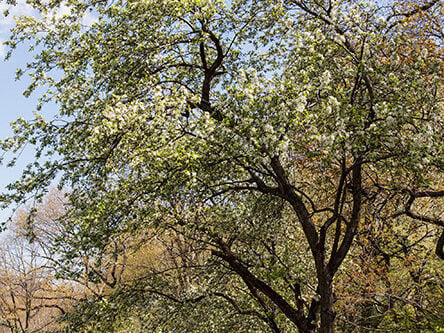
PLANT
Crabapple
When it comes to colorful trees, crabapples are the gift that keeps on giving. In the spring, their flowers bloom in an array of colors, from white to pink, peach, blush, yellow, and even deep burgundy. In fall, their leaves turn a beautiful reddish-orange color, and the bright red fruit is a bird favorite.
Tag your best leaf-peeping pics with #CentralParkFoliageWatch and follow us on social @CentralParkNYC to see the Park transition into its fall finery in real-time.
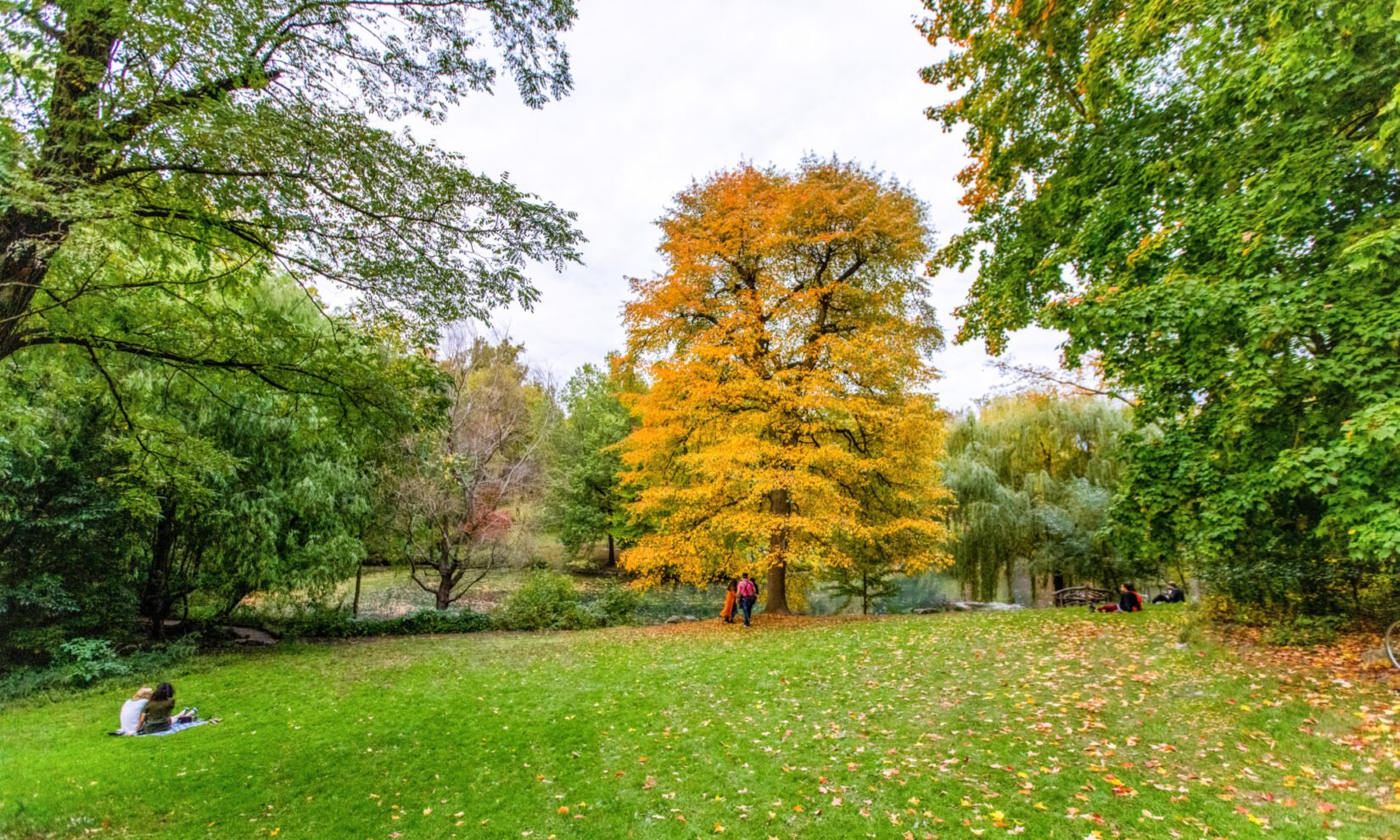
Source: Peak Fall Foliage Map | Central Park Conservancy
